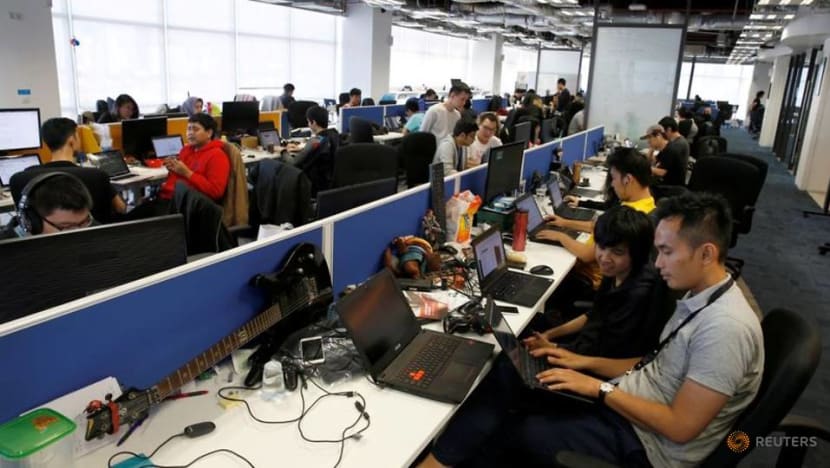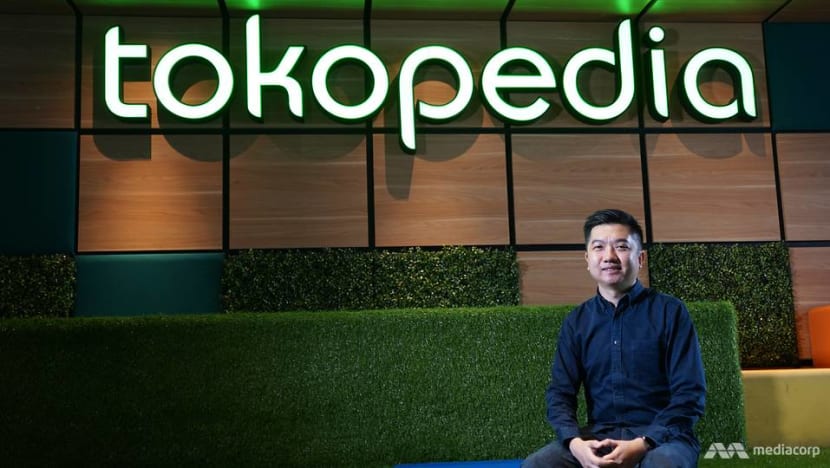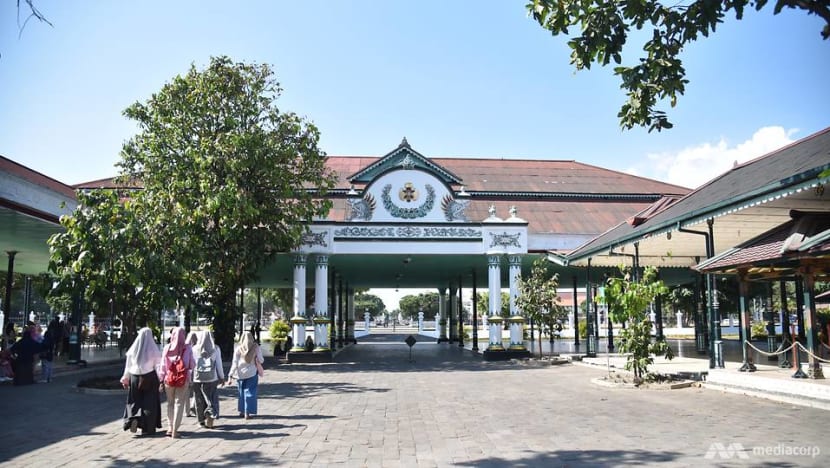commentary Commentary
Commentary: The future is Asian but can Singaporeans lead it?
Exposure to ASEAN, China and India will give Singaporeans an edge in a world of disruption and the comparative advantage in those markets with a rising middle class, says Jonathan Chang

Employees of Traveloka are seen working at the company's headquarters in Jakarta, Indonesia, August 2, 2017. (File photo: REUTERS/Beawiharta)
SINGAPORE: Deputy Prime Minister Heng Swee Keat delivered his much anticipated 2020 Budget speech on Tuesday (Feb 18), and I couldn’t have been more delighted to hear the Government will put more resources in supporting students in gaining overseas experience.
In order to help students acquire cross-cultural skills and understand the region, the Government has set a new target for 70 per cent of local graduates from Institutes of Higher Learning to have overseas exposure, and 70 per cent of the exposure to be in Southeast Asia, China, or India, as part of the new Asia-Ready Exposure programme.
This new initiative complements the Global Ready Talent Programme, launched in October 2019, combining current and local overseas internship programmes, with more funding support for students interning overseas with Singapore firms.
Though the thought of traveling is probably very low on everyone's list right now, given the COVID-19 outbreak, however, once this global health issue subsides, we must press on with the push for our young people to gain overseas exposure in Southeast Asia, China and India.
READ: Singapore universities suspend student exchange programmes to South Korea after COVID-19 outbreak

AN ECONOMICALLY VIBRANT REGION
Not only is this enhancement of people-to-people ties a great way to strengthen bond among nations, it also builds familiarity and deeper understanding of each other’s perspectives and worldviews.
We might not need to agree on all things – but at the very least our students stand to better understand each others' position and explore areas of cooperation for mutual benefit.
Singapore is deeply connected within the ASEAN economic block since the ASEAN leaders mooted the idea for an ASEAN Economic Community - with a vision for a competitive, innovative and dynamic region with high levels of connectivity, investments and sectoral competition.
Today, ASEAN is home to one of the largest rising middle-class and working-age population proportions in the Asia-Pacific.
READ: Commentary: The future just got brighter for aspiring Singapore tech entrepreneurs
READ: Commentary: COVID-19 could redefine Singapore’s place in the global economy
Where the economy may be increasingly driven by entrepreneurship, home-grown start-ups in the city-state must have a regional outlook from the start.
The Singapore market, though advanced, is still considerably small but ASEAN is home to eleven unicorns, with five of them based in Singapore (Grab, Lazada, Razer, Trax and Sea), with the rest are from Indonesia (Bukalapak, Gojek, Tokopedia, and Traveloka), Philippines (Revolution Precrafted) and Vietnam (VNG Corporation).
Within this list, all of Singaporean unicorns are regional companies whereas their Southeast Asian counterparts serve almost exclusively local markets. With the ASEAN Economic Community Blueprint 2025 outlining a concrete action plan and priority areas for collaboration, the outlook for regional growth remains strong.

This even rings truer in large markets such as China and India where companies could be worth billions of dollars without needing to venture out of their home markets.
With the completion of Regional Comprehensive Economic Partnership (RCEP), the opportunities in China are ripe for the picking. Even as China’s growth slows, it will remain a key engine for the global economy for the foreseeable future.
India, by sheer economic heft, will also remain a chief second engine, despite its departure from the RCEP.
THE FUTURE IS ASIAN
A McKinsey report titled The Future of Asia has an interesting opening line:
For years, Western observers have talked about Asia’s massive future potential. But the future arrived even faster than expected. The question is no longer how quickly Asia will rise; it is how Asia will lead.
This speaks to the urgency in boosting the capabilities of the workforce in Singapore in working with their counterparts all over the region.
Where many multi-national corporations use Singapore as regional head office, younger Singaporeans will increasingly be expected to work in cross-border teams, with supporting business units across the region.
READ: Commentary: Why aren’t more Singapore businesses transforming? Mindsets aren’t the key obstacle
READ: Commentary: Don’t waste Budget money. Here’s how to stretch your SkillsFuture dollars
A similar trend will be experienced by small, high-performing companies. Take Wonderlabs Group for example – this Singaporean venture-backed company operates in six countries across nine cities. Wonderlabs assists its clients in building and managing their software development teams around the globe.
Shopee, which comes under Sea, expanded from 10 to 1,000 workers in just four years, and have markets in Singapore, Indonesia, Malaysia, Vietnam, Thailand, the Philippines and Taiwan, illustrating the importance of communication, collaboration and teamwork.
UNDERSTANDING THE LOCAL CONTEXT
Some years ago, I brought a group of students on a learning journey to Yogyakarta, Indonesia. We visited the Borobudur Temple, and got acquainted with remnants of this historical site that once thrived in a Buddhist kingdom.
We also visited local enterprises, understanding their management strategies and gaining new market insights. Students walked away with a better appreciation of the country’s working culture, which was vastly different from the one they were accustomed with.

American start-up Uber learnt it the hard way when it failed to understand a local market thoughtfully. In its early days in Indonesia, Uber didn’t offer an option for cash payment and consequently lost significant market share to local competitor Grab.
Why didn’t they offer cash payment? Because in Silicon Valley – people can even buy churros from street vendors using credit cards.
The lesson learnt? One needs an understanding of the local culture, not just the market conditions and regulatory landscape in breaking new ground and entering a country.
CONSIDER SOUTHEAST ASIA, CHINA AND INDIA
I get it. Singapore students prefer to venture out to the UK, US and other developed countries for their studies.
The familiarity of living in an advanced city and comforts afforded by a high quality of life allow students to adapt quickly to the new environment while still staying within their comfort zone.
Schools carry out exchange programmes with many universities in such developed nations so students can benchmark against their counterparts there, which improves our competitiveness.
READ: Commentary: The fear of failure cannot help Singapore reach our best
READ: Commentary: Why aren’t there more Singaporean CEOs?
But here is a thought: More students in developed nations head to Asia for immersion programmes. They do so, recognising the importance of understanding Asia for their career trajectory. So if young Singaporeans want to remain competitive, they must understand our own backyard first.
In this, educators too have a role to play. Though sending our students overseas is an important step forward, hopefully administrators of the Asia-Ready Talent programme can pay attention to and outline what experiences and learning outcomes we want our students to gain and have them demonstrate how they’ve applied these new lessons in other areas of their work and future internships.
The last thing we want is for the programme to be a giant box-ticking exercise.
Jonathan Chang is a tech entrepreneur, investor, advisor, educator, and global speaker.















